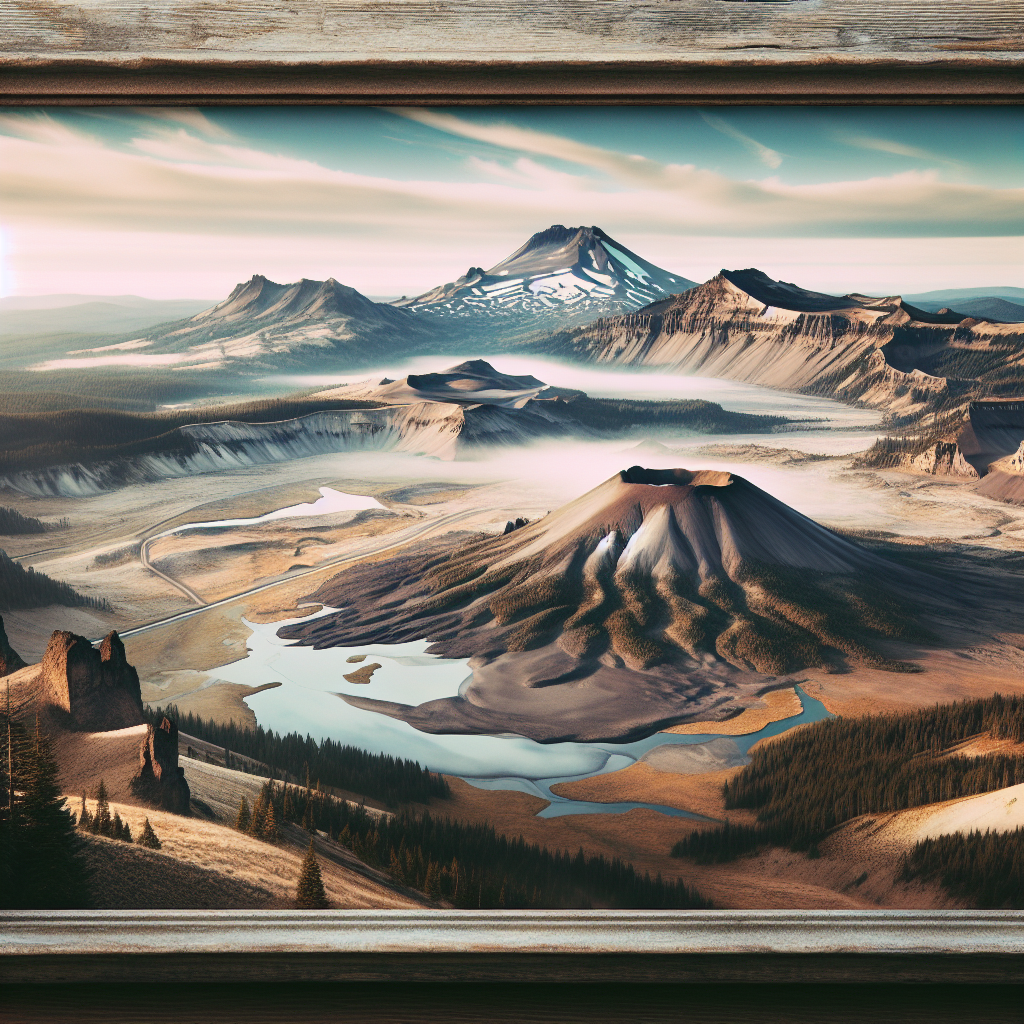Title: Embracing Oregon’s Volcanic Legacy: Exploring the Cascade Range
Welcome to an Oregonian Adventure
Enter a majestic world shaped by volcanic activity over millions of years. Discover the incredible forces of eruptions and lava flows that have shaped Oregon’s landscapes, carved its mountains, and continue to intrigue geologists and visitors alike. This guide is designed to provide you with a glimpse of Oregon’s iconic volcanic history.
Witnessing Timeless Wonders – Mount Hood
An essential stop on any volcanic history tour is Mount Hood, Oregon’s tallest peak. Known by the local Multnomah Tribe as Wy’east, this volcano last erupted in the 1790s, showing off Oregon’s dynamic geological nature. Enjoy a zigzag through historic Timberline Lodge, a striking structure atop the mountain. Be sure to trek Timberline Trail, a challenging but rewarding journey offering breathtaking views of the volcanic edifice.
Just bear in mind, Oregon’s mountain landscapes can be unpredictable. Locals know to pack layers, as mountain weather can switch from sunny to stormy in the blink of an eye. And never forget sunscreen – even cloudy days can create harsh conditions at high altitudes!

Lost in Lava – Newberry National Volcanic Monument
Next, point your compass towards Newberry National Volcanic Monument near Bend. Here you can explore Oregon’s most recent volcanic upheavals. The Lava Lands Visitor Center is an excellent starting point, where you can even climb up the 500-foot cinder cone of Lava Butte.
Curious adventurers can delve into the monumental Lava River Cave – an underground lava tube stretching over a mile long! Remember to bring warm gear, even in summer; the cave’s temperature stays chilly year-round.
The Great Survivor – Mount Mazama and Crater Lake
A story of Oregon’s volcanic history won’t be complete without a mention of the collapsed giant, Mount Mazama, and the stunning Crater Lake it left behind. Today the lake, with its intense cobalt-blue waters, is one of the clearest and deepest in the world.
Despite its beauty, Crater Lake has some hidden dangers. Know that the lake’s rim drive is a narrow twisting road. Locals would tell you that services are limited, so keep your gas tank full and have plenty of snacks on hand.
In winters, many portions of the park close due to heavy snow. However, the part that remains open provides excellent snowshoe and cross-country skiing opportunities. Always monitor the local weather forecast before planning a winter visit.
Geological Glimmers – Three Sisters Wilderness and McKenzie Pass
Last, voyage to the Three Sisters Wilderness of the Cascade Range, where nature’s eruptive beauty is personified. It’s here you will see three closely spaced volcanic peaks named North, Middle, and South Sister.
Adventurous explorers can follow the obsidian-rich Pacific Crest Trail while trekkers preferring an easier pace can amble along the Metolius River trail to take in the geologic grandeur. Remember that many of these trails require a day-use permit, an essential detail often overlooked by tourists but familiar to locals.
Don’t miss the McKenzie Pass, home to the Dee Wright Observatory, an unusual and beautiful structure made from local lava rock. The Observatory offers stunning panoramic views of the Cascade Range, including Mount Washington and Belknap Crater.
Parting Thoughts
Embarking on a journey through Oregon’s volcanic wonders offers an adventure like no other, revealing a powerful past etched into every rugged peak and tranquil lake. As you venture through these natural wonders, tread gently, respect the wilderness, and create memories that will last a lifetime. Every Oregonian would agree – there is no better way to appreciate our land than to immerse yourself in its enduring geological story.
Remember, wherever you go in Oregon, take it slow and easy, because the journey is just as beautiful as the destination. As Oregonians, we’re privy to the secrets of this wild terrain, and we’re thrilled to share them with you. Happy adventuring!
